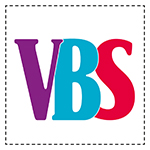The versatility of napkin technique
Instructions No. 1866The classical Napkin technique one is known to most hobbyists, but this technique can do so much more. It works not only only on wood and papier-mâché but also on textiles, candles, glass and concrete. In this manual we have put together for you which varnish you should use for which surface and which materials you need.

You need these craft materials for Napkin technique
For this handicraft technique you need, in addition to the desired object, a Napkin with a motif of your choice, a napkin brush, tweezer scissors as well as the matching Napkin varnish and glue.
Classic Napkin technique
For the classic primer Napkin technique , first prime the object with white Handicraft paint. This will highlight the color intensity of your Napkin . If your object already has a light surface, or you want the structure of the from background to remain visible, this step is not necessary. Cut out the desired napkin motif with tweezers. For this Napkin technique the only upper printed layer is needed. To remove the unprinted layers, simply stick a strip of adhesive tape halfway down the bottom and pull it off again As soon as all motifs are cut out and in the right place, wear the Napkin varnish with a soft napkin brush first on the object and then on your motif from the inside out. Be careful not to apply too much pressure on the varnish, otherwise it may Napkin tear. Allow to dry well. To seal the motif, simply apply another layer with the brush Napkin glue over it. Let everything dry well - done! You can achieve a particularly noble effect if you use the Napkin varnish „Mica-effect" in or Silver Gold use.
Try the technique on other surfaces as well:
Textiles
The universally popular technique also works on textiles. First of all, cover the work surface with newspaper or one to avoid Handicraft mat contamination. As usual, choose a Napkincut out the motifs and remove the unprinted layers. Now apply the special one Napkin varnishfor textiles directly on the fabric, place the motif carefully with a soft brush and apply the again. Napkin varnish Make sure that the lacquer is applied right up to the corners and edges of the motif. The garment is simply ironed to fix it in place. Caution: Place baking paper between the fabric and the iron. Iron at level 3 until the glue and fabric are fused together. The fabric can then be washed at 30°C on a delicate cycle.Important: If you are Napkin technique working with thin fabrics such as T-shirts or cotton bags, place one or the Handicraft mat like between the layers of fabric. Otherwise it can happen that the two layers will stick together.
Candles
Candles-Potch is an adhesive that has been specially Napkin technique developed for Napkin glue use Napkin technique on candles. It is flame-retardant and thus ensures a safe burning of the candle. Ideal to design candles for every occasion individually and personally.
Glass
Why not apply the technique to glass or porcelain objects and transform boring objects into unmistakable unique pieces. To apply your wish-Napkin also on glass or porcelain, you need a special varnish that sticks to glass and porcelain objects. Make sure that your chosen object is free of dust and grease before you apply Napkin it. When applying the varnish, it is very important to paint the edges very carefully. The paint should dry well afterwards, approx. 4 hours. After your object has been baked in the oven at 160°C for about 30 minutes, it can be wiped off Tip: To ensure that you enjoy your "new" glass and porcelain items for a long time, you should wash the dishes by only hand. When designing the dishes, make sure that drinking edges and the surfaces for food are left free.
Stamping foil
Combine them Napkin technique with embossing foil to create a fascinating 3D effect. For this, stick your wish for-Napkin basic instructions with Napkin varnish on stamping foil. After the lacquer has completely dried, you can use embossing tools to highlight Napkin certain motifs on yours. Just carefully work out the specific areas or individual details on the back. In this way you can create an impressive 3D look in no time at all.
Octopus
This Crackle varnish creates an effective antique look in no time at all. In the first step, the surface should be primed Handicraft paintwith a high-contrast primer. This colour will later become visible again through the cracks. Allow to dry well. Coat your chosen surface with the Crackle varnish. This application must also dry completely. Now the second colour is applied. Important: The second coat of paint may only be applied in one direction, as otherwise no optimum tearing effect can be achieved. After application, the lower colour will reappear in the cracks. Only now do you start with the familiar Napkin technique.Tip: If you want to work with the antique effect, it depends on how much varnish you use. If you use a lot of Crackle varnish if you apply a little varnish, you will get larger clear cracks, if you apply a little varnish, the cracked areas will become rather fine.

 www.vbs-hobby.com
www.vbs-hobby.com 


























